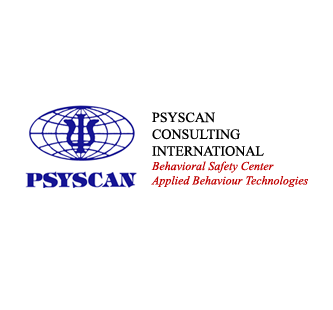Psyscan provides services that are based on our unique, integrated “Working Safely Together” method that focuses on the job-related interactions between organizational systems, human behavior and people factors, which together forge the prevailing organizational safety culture.
All three critical factors constantly interact with each other to create the organization's safety culture. Despite excellent managerial systems, people may not always behave in expected ways because of their unique attitudes and belief systems. Conversely, people may take safety seriously, but may still behave unexpectedly to overcome challenges presented by system malfunctions. Many companies choose consultancies that tend to focus on only one factor at the expense of the other two. Research by the best business schools has shown that such a singular approach is doomed to failure.
Psyscan prefers to focus on all three factors at the same time. We holistically assess your safety culture to arrive at tailored solutions using best 'management of change' practices. In partnership with clients, we create sustainable, long-term results by developing milestones and measurable key performance indicators. We develop tailored approaches using only those factors desired by clients to meet their needs. Organizational System factors represent management systems and structures that determine people's 'on-the-job' behaviors. When these systems and structures are aligned and function as intended, organizations become highly profitable as their cost-base is always 'adding value'. When misaligned or functioning badly, enterprise-wide risks and operational risks are created. In turn, this creates a culture of crises management which soon becomes the norm. In such conditions safety is often overlooked or paid 'lip-service'.
Job factors (Work Operations) refers to the use and set-up of materials, equipment and manpower which determine the way people behave 'on the job'. Well planned and executed jobs are completed safely, on time and within budget. Any one job factor that does not meet expected standards can lead to delays and cost-overruns. In these circumstances safety tends to be overlooked or paid 'lip service'.
People factors (Human Nature) represent such things as motivation, leadership styles, commitment, attitudes, beliefs and values. 'This section will require full attention to be placed on the critical People Issues involving participation across the broad spectrum and ranks of workers, supervisors, middle managers and management.
Human Psychosocial System (E3 Human Errors) If these are aligned to your organization's goals and objectives, people take responsibility for their actions and are committed to improvement in all spheres of work activity. If not, poor performance can become the norm with safety being overlooked or ignored. This section will require full attention to be placed on the following System Issues: Participation, Observation, Managerial and Sustenance strategies. It should be noted that the BBS approach is basically aimed at bringing down the rates of safety accidents and incidents statistics that are largely due to human errors. The proposed framework is enclosed below:
Based on the above Chart, it is observed that accident rates can be lowered through improvements in Facilities or Engineering as a first design strategy. Accident rates can be lowered further through a tighter safety audit and management system of supervisors, auditors and management training. To bring accident rates down to zero level would require a company-wide system of managing human errors and unsafe behaviors or attitudes through BBS. The next chart, indicates how a bottom-up BBS encourages peer-to-peer reports to supervisors or worker to manager or vice versa can ensure a quantum leap to safety management.
In essence, BBS involved the implementation of a Safety Excellence Process, which incorporates the following Unit Activities, Subsystems and Procedures:
Each of this unit area will require a careful planning and strategic practical framework for implementation. The detailed description and consultation provided for each of these various aspects of the BBS approach must be implemented very diligently. |
